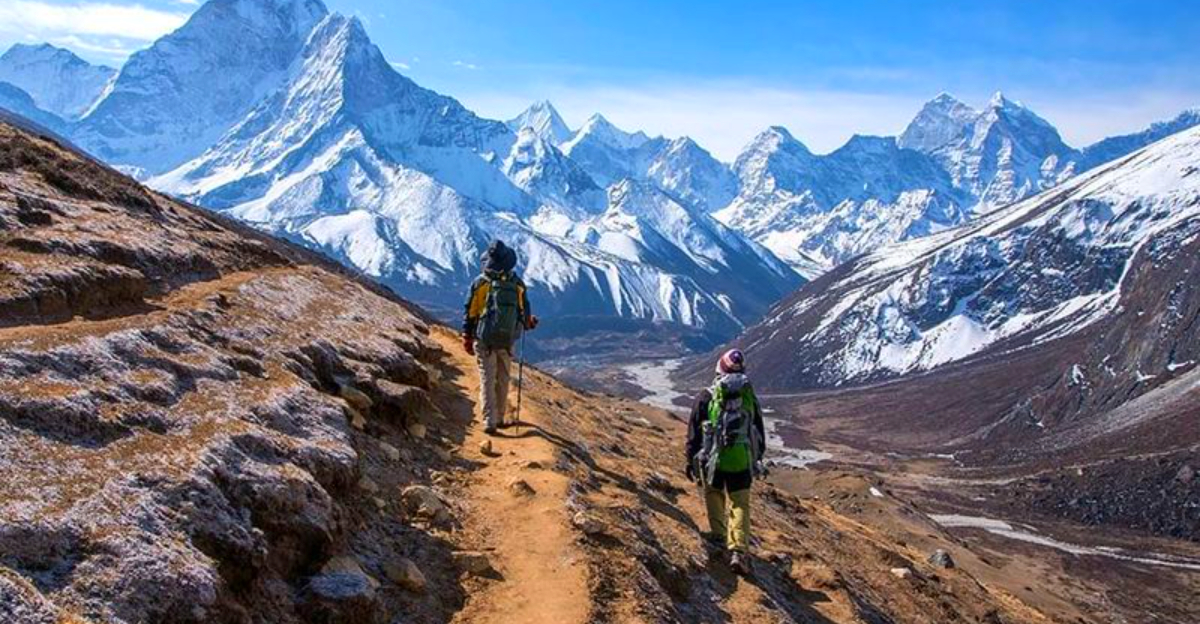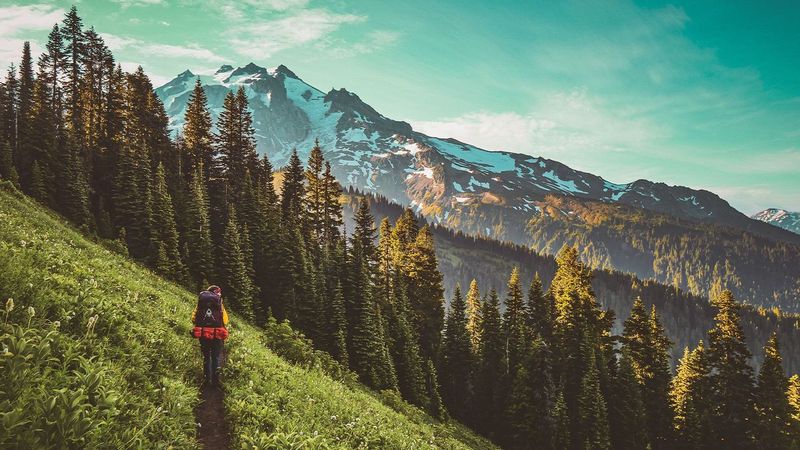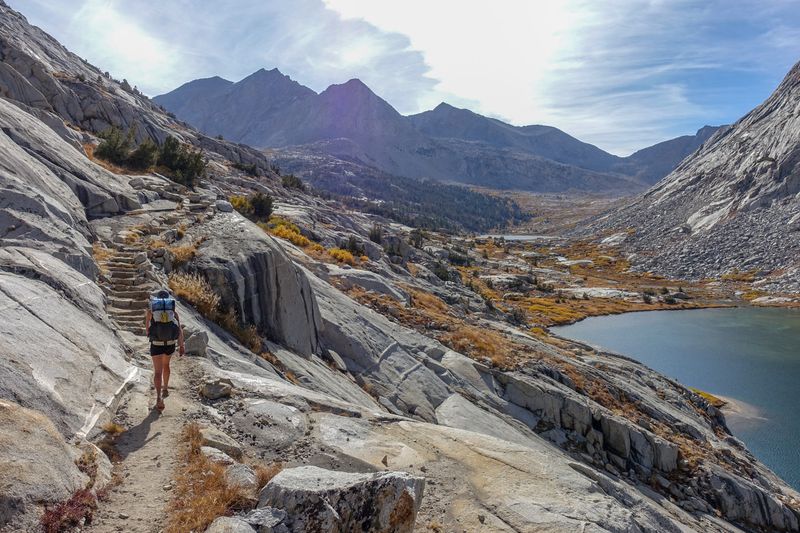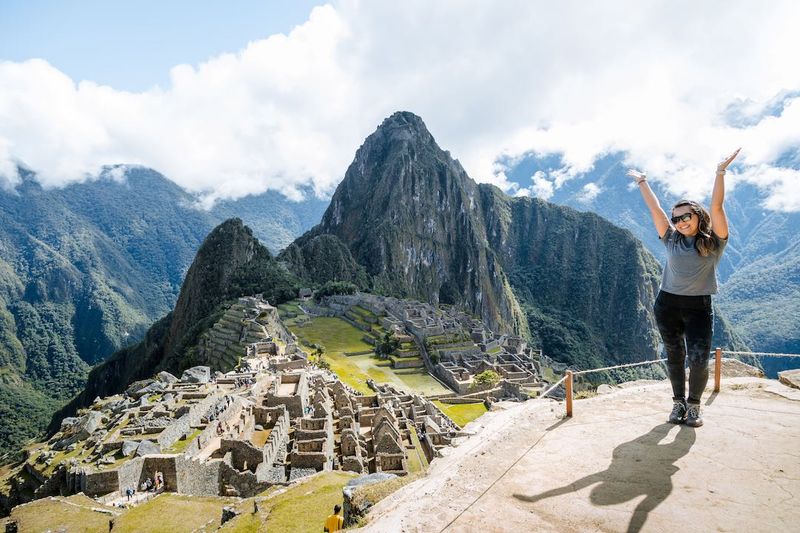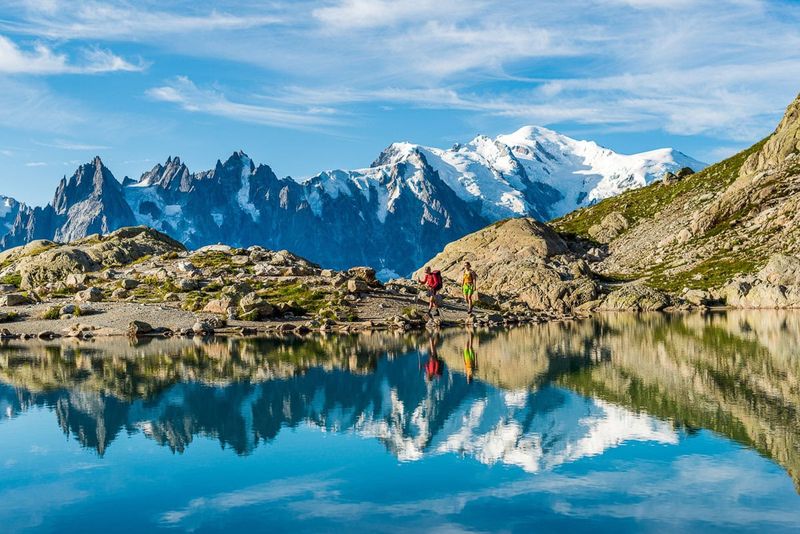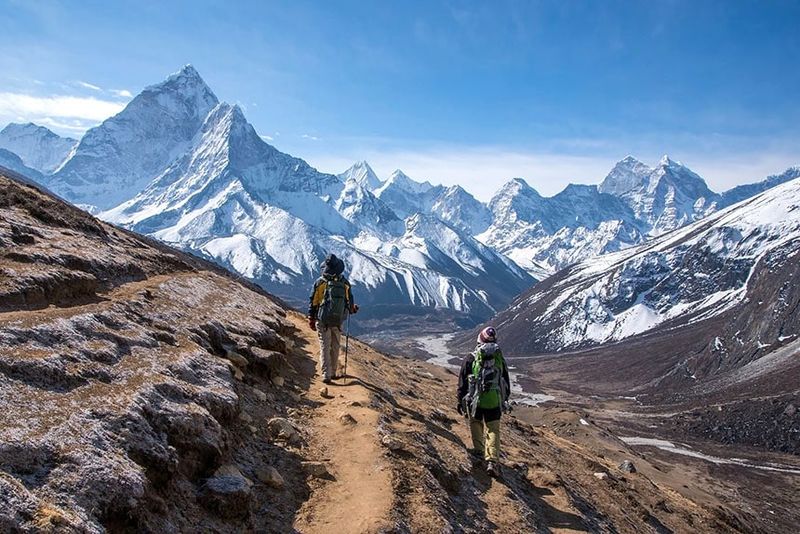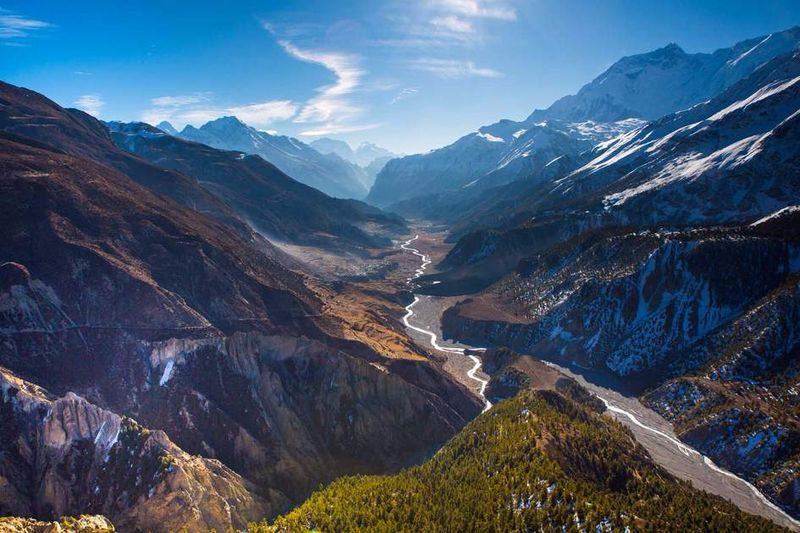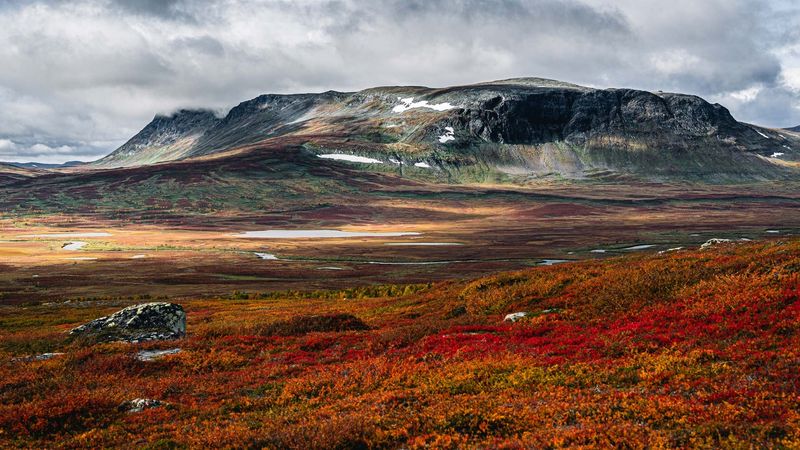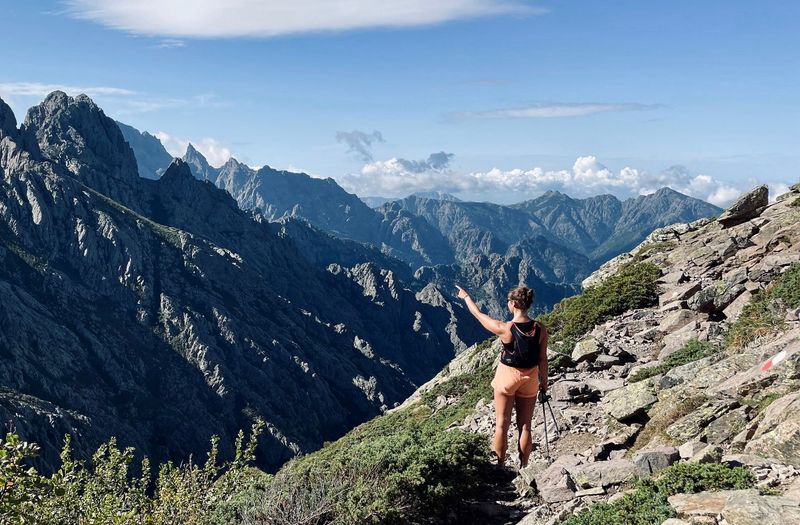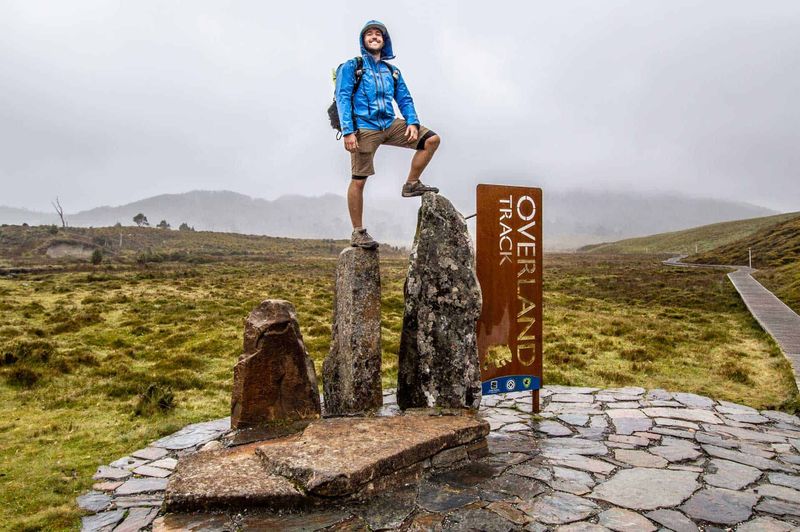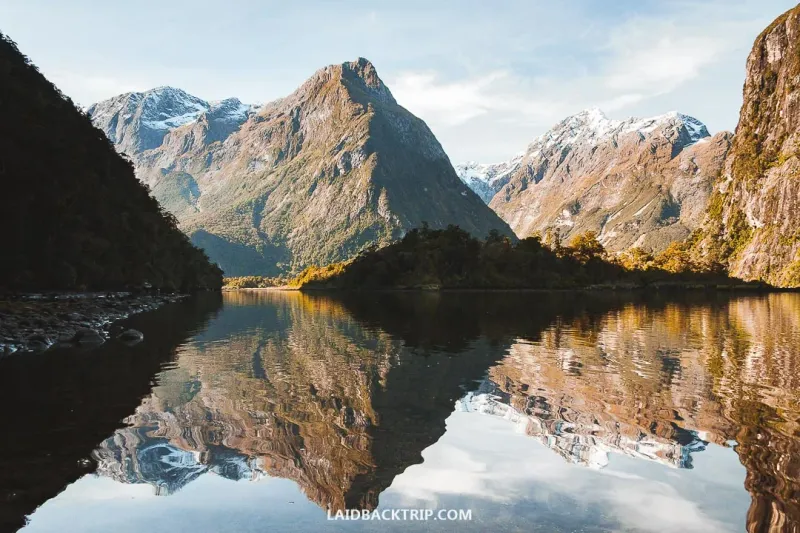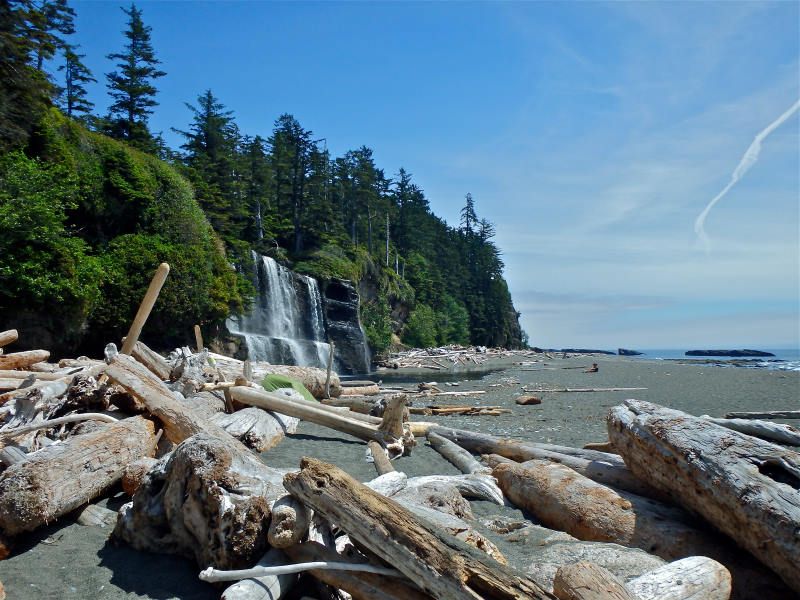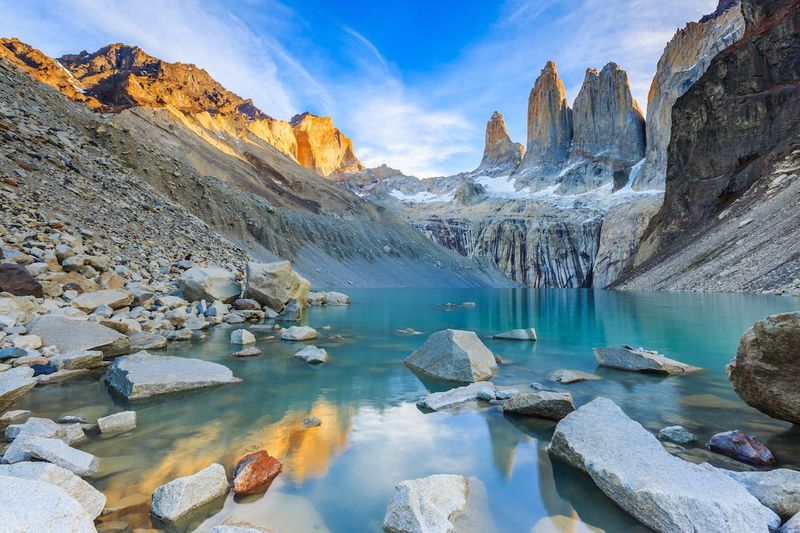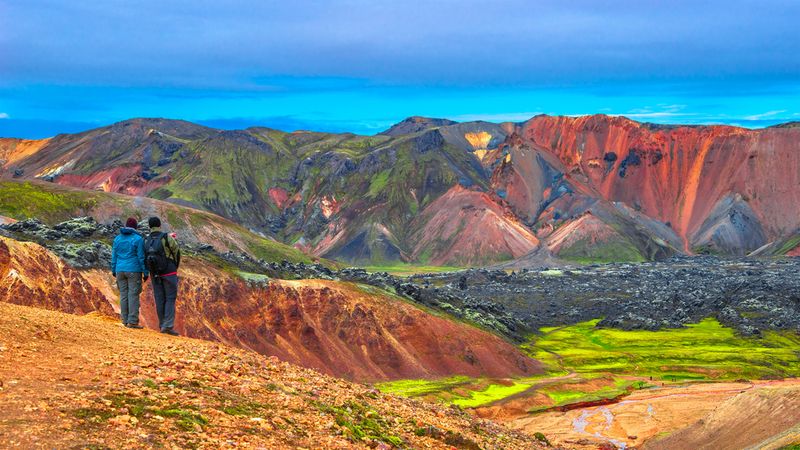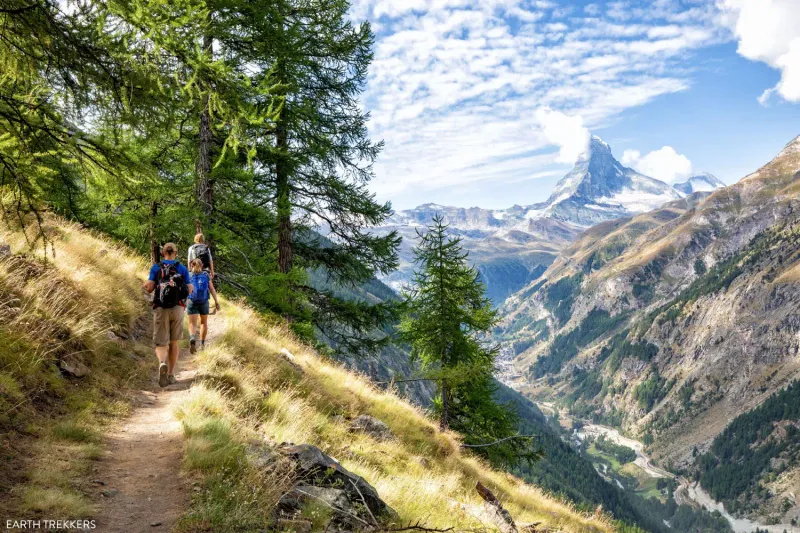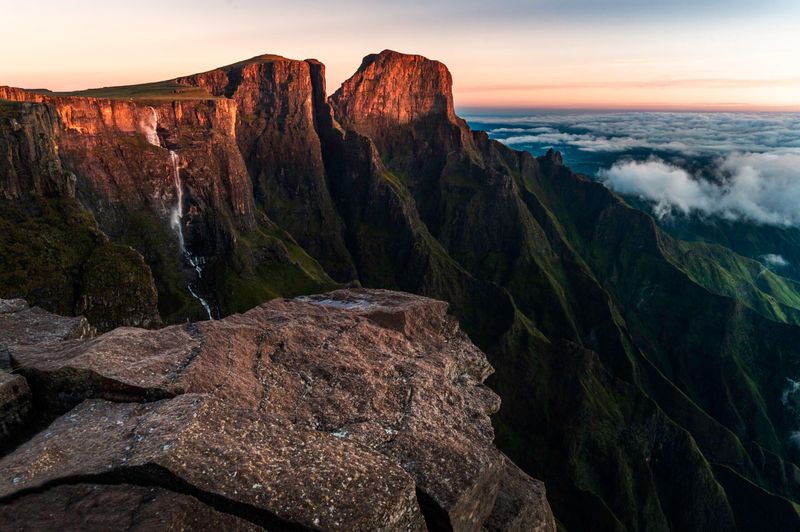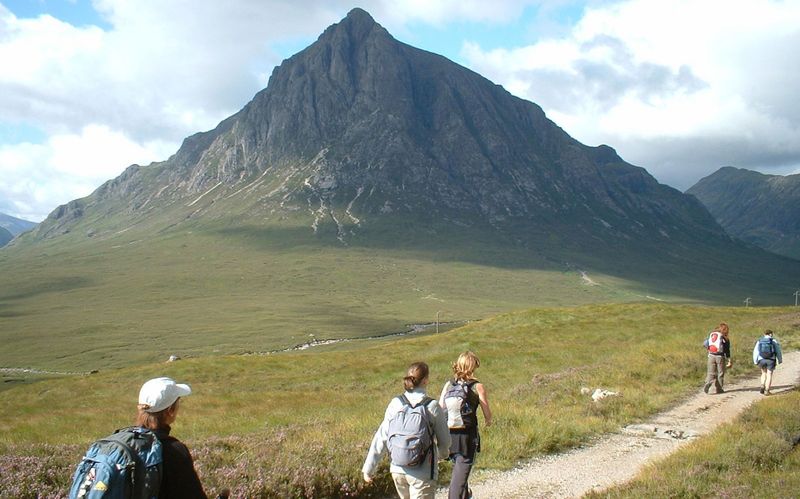Have you ever dreamed of walking through mountains, forests, and valleys that take your breath away? Hiking trails around the world offer adventures that test your limits and reward you with views you’ll never forget. From icy peaks in the Himalayas to coastal cliffs in Hawaii, these paths connect us to nature in powerful ways. Whether you’re a seasoned trekker or just starting to lace up your boots, these 20 trails will inspire your next great outdoor adventure.
1. Appalachian Trail, USA
Stretching over 2,197 miles across 14 states, this legendary footpath is the longest hiking-only trail on the planet. Starting at Springer Mountain in Georgia and ending at Mount Katahdin in Maine, the journey demands serious commitment. Most thru-hikers spend five to seven months completing it, battling everything from blazing heat to freezing rain.
Every year, thousands attempt the full trek, but only about one in four finishes. The trail passes through dense forests, rocky ridges, and charming small towns where hikers resupply. You’ll meet a community of adventurers who share tips, stories, and trail names.
Planning is essential because permits, gear, and timing all matter. The Appalachian Trail Conservancy website offers detailed maps and advice for every section.
2. Pacific Crest Trail, USA
Running 2,650 miles from the Mexican border to Canada, this trail slices through California, Oregon, and Washington. It’s even longer than the Appalachian Trail and crosses deserts, volcanic peaks, and glacier-carved valleys. Permits are required for long segments, so plan ahead to secure your spot.
The route is open to hikers and horseback riders but closed to bikes and motorized vehicles. You’ll face scorching heat in Southern California’s desert and deep snow in the Sierra Nevada, depending on the season. Water sources can be scarce in some stretches, making resupply strategy critical.
Thru-hikers typically start in April and finish by September. The U.S. Forest Service manages permits and provides up-to-date trail conditions online.
3. John Muir Trail, USA
Named after the famous naturalist, this 211-mile trail runs from Yosemite Valley to the summit of Mount Whitney, the highest peak in the lower 48 states. Wilderness permits are mandatory and notoriously hard to get because demand far exceeds supply. Many hikers enter a lottery months in advance.
The trail showcases some of California’s most dramatic scenery, including towering granite cliffs, alpine meadows, and turquoise lakes. Elevation changes are intense, with several mountain passes topping 11,000 feet. You’ll need to be ready for altitude and rapidly changing weather.
Most people hike it southbound over two to three weeks. The Pacific Crest Trail Association offers resources and permit information to help you prepare.
4. Inca Trail to Machu Picchu, Peru
Walking the same stone steps the Incas carved centuries ago is a dream for history lovers and adventurers alike. This classic four-day trek covers about 26 miles and ends at the iconic ruins of Machu Picchu. Strict daily quotas mean permits sell out months ahead, so booking early is non-negotiable.
The route climbs through cloud forests, crosses high mountain passes, and winds past smaller archaeological sites. New access rules at Machu Picchu require visitors to choose one of three circuits, so check the latest regulations before you go. Guides are mandatory, which adds to the experience with local knowledge and cultural insights.
Altitude can be challenging, so acclimatize in Cusco first. Reserve through official operators listed on incatrailreservations.com.
5. Tour du Mont Blanc, France/Italy/Switzerland
Circling the Mont Blanc massif, this 170-kilometer loop takes you through three countries in 10 to 11 stages. The total ascent adds up to roughly 10,000 meters, so your legs will feel every climb. Summer is the busiest season, and mountain huts book up fast.
Each day brings new landscapes, from flower-filled meadows to rocky ridges with views of Europe’s highest peaks. Villages along the way offer warm meals, cozy beds, and a taste of Alpine culture. You can hike clockwise or counterclockwise, though most go counterclockwise.
Weather can shift quickly, so pack layers and rain gear. The official website autourdumontblanc.com has maps, hut contacts, and stage-by-stage guides to help you plan.
6. Everest Base Camp Trek, Nepal
Standing at the base of the world’s tallest mountain is a bucket-list moment that draws thousands of trekkers every year. The trek takes you deep into the Khumbu region, passing Sherpa villages, Buddhist monasteries, and suspension bridges swaying over roaring rivers. Entry to Sagarmatha National Park and Khumbu permits are required.
Most people complete the trek in 12 to 14 days, allowing time to acclimatize to the thin air. Altitude sickness is a real risk, so listen to your body and ascend slowly. Teahouses along the route provide food and shelter, making it accessible without a full camping setup.
Costs remain stable year-round, though seasons affect weather and trail conditions. Plan your trek with a reputable operator like Trekking Planner Ltd.
7. Annapurna Circuit, Nepal
Winding around the Annapurna massif, this trek offers a stunning variety of landscapes, from subtropical forests to high-altitude deserts. The circuit crosses the Thorong La pass at 5,416 meters, one of the highest trekking passes in the world. Permits are handled through the Annapurna Conservation Area Project (ACAP), and some operators still reference TIMS.
The full loop takes two to three weeks, though road construction has shortened some sections. You’ll encounter diverse cultures, including Hindu and Buddhist communities, each with unique traditions and architecture. Teahouses make the trek comfortable, and you can adjust your pace as needed.
Always verify the latest permit rules on Nepal’s e-permit portal before departure. Magical Nepal and similar operators can guide you through the logistics.
8. Kungsleden (King’s Trail), Sweden
Sweden’s King’s Trail stretches over 450 kilometers between Abisko and Hemavan, cutting through remote Arctic wilderness. The most popular section runs 105 kilometers from Abisko to Nikkaluokta and takes about seven days. Swedish Tourist Association (STF) huts along the route provide beds, saunas, and meals.
You’ll hike through birch forests, cross river valleys, and climb rocky passes with views that stretch forever. Summer brings the midnight sun, while autumn paints the tundra in fiery reds and golds. Wildlife like reindeer and Arctic foxes roam freely.
The trail is well-marked and relatively gentle, making it perfect for those new to long-distance hiking. Book huts in advance during peak season through the Swedish Tourist Association website.
9. GR20, Corsica, France
Often called Europe’s toughest waymarked trek, the GR20 runs 180 kilometers across the spine of Corsica. Split into 16 stages, the route demands scrambling over boulders, climbing steep ascents, and navigating exposed ridges. It’s not for the faint of heart.
The northern half is more technical and challenging, while the southern section offers slightly gentler terrain. Refuges provide basic shelter, but spaces fill quickly in summer, so carrying a tent is smart. Water sources can be limited, and weather can turn harsh without warning.
Most hikers take two weeks to complete the full trail. Physical fitness and mountain experience are essential. Check gr20-infos.com for detailed stage descriptions, maps, and current conditions before you set out.
10. Overland Track, Tasmania, Australia
Tasmania’s Overland Track is a 65-kilometer journey through Cradle Mountain-Lake St Clair National Park, one of Australia’s most pristine wilderness areas. The trek typically takes six days and passes through ancient rainforests, alpine moorlands, and glacial valleys. Booking is required during the main season from October to May.
You’ll encounter unique wildlife like wombats, wallabies, and Tasmanian devils, along with plants found nowhere else on Earth. Huts along the trail provide shelter, but they’re basic, so bring a tent as backup. Weather can be unpredictable, with rain and cold even in summer.
The track is well-maintained and clearly marked, making navigation straightforward. Reserve your spot early through parks.tas.gov.au to avoid disappointment.
11. Milford Track, New Zealand
Dubbed the finest walk in the world, the Milford Track winds 53.5 kilometers through Fiordland National Park. The four-day trek takes you past thundering waterfalls, mirror-like lakes, and rainforests draped in moss. The Great Walks season runs from November to April, and DOC hut bookings are essential.
Rain is common, so waterproof gear is a must, but the downpours only make the waterfalls more spectacular. The track is one-way, and hikers must start and finish on specific days. You’ll cross Mackinnon Pass, the highest point, with sweeping views of the surrounding peaks.
The trail is well-maintained and suitable for fit walkers. Book early through doc.govt.nz, as spots fill up fast months in advance.
12. West Coast Trail, Canada (BC)
Running 75 kilometers along Vancouver Island’s wild coastline, the West Coast Trail is famous for its rugged beauty and challenging terrain. The trek takes six to eight days and involves climbing ladders, crossing suspension bridges, and timing your route around tides. Reservations are mandatory and sell out quickly.
You’ll hike through dense rainforest, scramble over slippery rocks, and camp on remote beaches. Wildlife includes sea lions, whales, and black bears. The trail was originally a life-saving route for shipwreck survivors, and remnants of that history remain.
Physical fitness and good planning are essential because the trail is remote and help is far away. Book your spot and check tide tables through parks.canada.ca well before your departure date.
13. Kalalau Trail, Kaua’i, USA
Carved into the cliffs of Kaua’i’s Napali Coast, the Kalalau Trail is 11 miles one-way and ranks among Hawaii’s most spectacular hikes. The trail hugs steep ridges hundreds of feet above the ocean, offering jaw-dropping views at every turn. Day-use and camping permits, plus parking reservations, are required.
Overnight camping is allowed only at Hanakoa and Kalalau, and spaces are limited. The trail can be slippery and dangerous, especially after rain, so tread carefully. You’ll pass waterfalls, sea caves, and hidden valleys that feel like stepping into another world.
Many people day-hike the first two miles to Hanakapi’ai Beach. For the full trek, plan for two to three days. Reserve permits through dlnr.hawaii.gov as early as possible.
14. Torres del Paine W Trek, Chile
Patagonia’s W Trek links three stunning valleys over four to five days in Torres del Paine National Park. The route takes you to the base of the famous granite towers, through the French Valley, and up to Grey Glacier. Park tickets must now be purchased online through the CONAF system, and refugio or campsite bookings are required.
Weather in Patagonia is notoriously unpredictable, with strong winds and sudden storms common even in summer. Layers and windproof gear are essential. The landscapes are stark and beautiful, with guanacos grazing and condors soaring overhead.
The trek is moderately challenging and well-marked. Book accommodations months ahead through TorresDelPaine.com or other official operators to secure your spot.
15. Laugavegur, Iceland
Iceland’s Laugavegur trail covers 55 kilometers over three to four days, linking Landmannalaugar and Þórsmörk. The route showcases the island’s otherworldly landscapes, including rainbow-colored mountains, bubbling hot springs, and vast black sand deserts. A reliable hut system along the trail makes it accessible without heavy camping gear.
Weather can change in minutes, so pack for all conditions, including rain, wind, and even snow in summer. River crossings can be tricky, especially after rain, so watch your footing. The trail is well-marked, and the huts offer warm meals and cozy bunks.
Summer is the best time to hike, with long daylight hours and milder temperatures. Book huts early through Arctic Adventures or similar operators to guarantee your spot.
16. Walker’s Haute Route, France to Switzerland
Connecting Chamonix, France, to Zermatt, Switzerland, the Walker’s Haute Route spans 180 to 200 kilometers over 14 stages. The trek crosses 11 mountain passes, with big ascents and descents that challenge even experienced hikers. Views of the Matterhorn, Mont Blanc, and countless other peaks make every climb worthwhile.
You’ll pass through charming Alpine villages where you can refuel with local cheese and fresh bread. Huts and hotels along the route provide comfortable stops each night. Weather can be harsh at high elevations, so bring warm layers and be prepared for snow, even in summer.
The trek typically takes two weeks. Earth Trekkers and other guides offer detailed stage-by-stage advice to help you plan your adventure.
17. Snowman Trek, Bhutan
Considered one of the toughest treks in the Himalayas, the Snowman Trek takes 25 to 30 days and crosses multiple passes above 5,000 meters. The route winds through remote valleys in Bhutan, far from roads and modern life. A Bhutan visa and guided trekking are mandatory, adding to the exclusivity.
You’ll encounter yak herders, ancient monasteries, and landscapes that few outsiders ever see. The trek demands excellent fitness, high-altitude experience, and mental toughness. Weather is unpredictable, and snowstorms can close passes without warning.
Only a handful of trekkers complete the full route each year. Outfitter Nepal and Bhutanese operators can arrange permits, guides, and logistics for this ultimate adventure.
18. Drakensberg Amphitheatre & Tugela Falls, South Africa
The Drakensberg Amphitheatre hike in Royal Natal National Park takes you to one of the world’s tallest waterfalls, Tugela Falls, which plunges nearly 1,000 meters. Starting from the Sentinel car park, the route climbs steeply using chain ladders or a gully, depending on your comfort level. The views from the top are absolutely breathtaking.
The hike is challenging, with high altitude and exposed sections, but the reward is worth it. You’ll walk along the escarpment edge with panoramic views of the mountains and valleys below. Weather can turn quickly, so start early and bring rain gear.
The round trip takes a full day. Check Anywhere We Roam or local guides for trail conditions and safety tips before heading out.
19. Mount Roraima, Venezuela/Brazil/Guyana
Rising like a giant table from the jungle, Mount Roraima is a tepui, a flat-topped mountain found only in this region. The six-day trek covers about 64 kilometers round trip through Canaima National Park. The plateau is home to unique plants and animals found nowhere else on Earth.
The hike starts in the Gran Sabana, crossing rivers and savanna before climbing steeply up the mountain’s flanks. Once on top, you’ll explore a surreal landscape of black rock formations, crystal-filled caves, and natural pools. Clouds often blanket the plateau, adding to the mystery.
Guides are required, and access is usually from the Venezuelan side. Travel with the Smile and other operators can arrange permits and logistics for this unforgettable adventure.
20. West Highland Way, Scotland
Scotland’s first official long-distance route, established in 1980, runs 154 kilometers from Milngavie to Fort William in eight classic stages. The trail takes you through some of the Highlands’ most iconic scenery, including Loch Lomond, Rannoch Moor, and the shadow of Ben Nevis, Britain’s highest peak.
The route is well-marked and passes through villages where you can find food, lodging, and a warm pub. Weather is famously unpredictable, so pack waterproofs and be ready for rain, wind, and midges in summer. The trail is moderately challenging, with some steep climbs but nothing technical.
Most people complete it in a week. The official website west-highland-way.com offers maps, accommodation listings, and planning tips to help you prepare.
